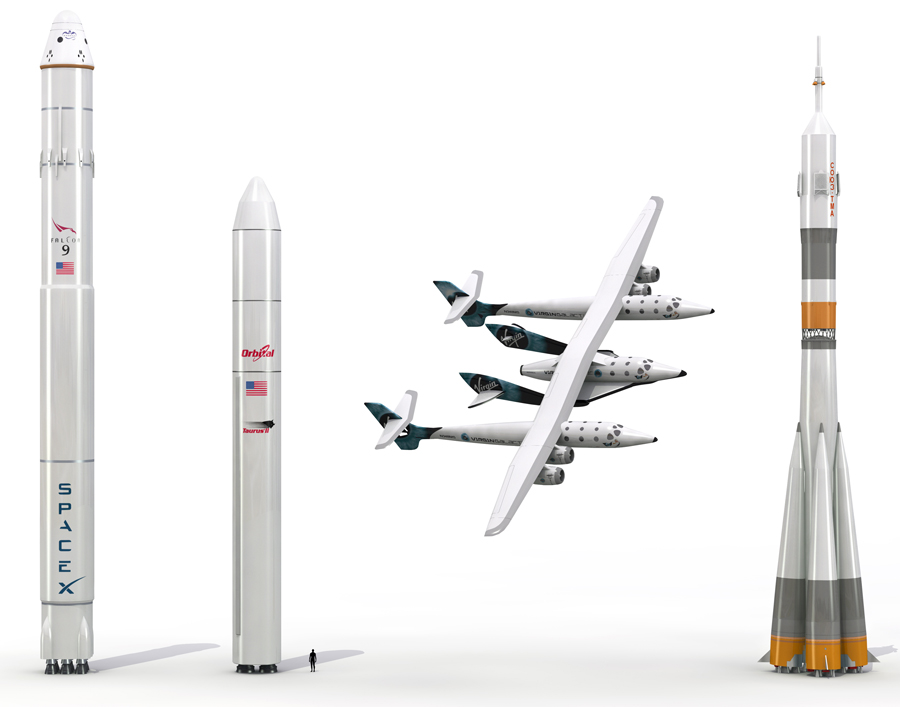The Space Boom

There are now more types of rockets and spacecraft flying and soon to be flying than at any other time since the early days of the space race. The rocket with the longest private space travel record is the Russian Soyuz (far right), which was developed by the Communist Soviet regime in the depths of the Cold War. Although a third stage was added when it was adapted for manned spaceflight (Soyuz is also the name of the spacecraft that carries cosmonauts on top of the rocket), the Soyuz rocket has the same basic design as the rocket used to launch Sputnik in 1957. In 2001, millionaire Westerners started using Soyuz craft to fly to the International Space Station.
The first American spacecraft designed for private spaceflight was SpaceShipOne, which won the Ansari X Prize in 2004 by making two suborbital flights above Earth’s atmosphere. Virgin Galactic is developing a scaled-up version for paying passengers; called SpaceShipTwo, it will be propelled by a hybrid rocket engine that combines elements of liquid and solid engines (second from right). An airplane called WhiteKnightTwo will carry the spacecraft above the densest parts of the atmosphere before ignition (see “To the Space Station and Beyond”).
Two new rockets that can launch spacecraft and satellites into orbit are being developed by Orbital Sciences (second from left) and SpaceX (far left). They represent competing engineering approaches: Orbital has tried to use as much off-the-shelf technology as possible to reduce risk, while SpaceX has tried to build as many systems in house as possible—including a new Merlin rocket engine—to reduce costs.
Illustration by John MacNeil, Interactive by Alastair Halliday
Keep Reading
Most Popular
Large language models can do jaw-dropping things. But nobody knows exactly why.
And that's a problem. Figuring it out is one of the biggest scientific puzzles of our time and a crucial step towards controlling more powerful future models.
The problem with plug-in hybrids? Their drivers.
Plug-in hybrids are often sold as a transition to EVs, but new data from Europe shows we’re still underestimating the emissions they produce.
Google DeepMind’s new generative model makes Super Mario–like games from scratch
Genie learns how to control games by watching hours and hours of video. It could help train next-gen robots too.
How scientists traced a mysterious covid case back to six toilets
When wastewater surveillance turns into a hunt for a single infected individual, the ethics get tricky.
Stay connected
Get the latest updates from
MIT Technology Review
Discover special offers, top stories, upcoming events, and more.